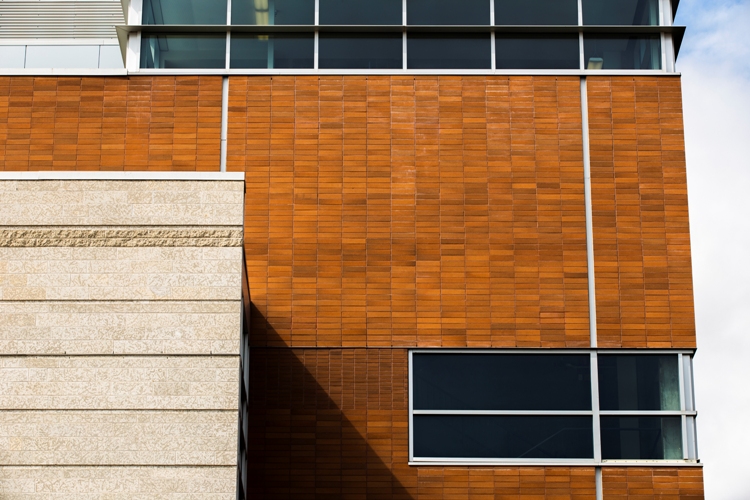Cladding building materials play a crucial role to enhance the aesthetic appeal, function, and durability of the buildings. The right architectural cladding building material will not only protect the structure from external elements, but will also add character, style, and elegance to the overall design. With a wide array of options available, it is crucial to understand the different types of cladding materials and their unique features. In this blog, we will explore the different types of cladding building materials and their characteristics.

Different Types of Cladding Building Materials & Their Characteristics:
1. Stone Cladding:
Stone cladding helps in creating a natural stone look while also bringing elegance to your walls. It is perfect for both the interior and exterior of the house. Stone cladding building material uses thin layers of faux or natural stone to lend your home a great earthy and rustic look. Stone cladding panels are extremely easy to install, which is virtually maintenance-free, and they age gracefully with time.
2. Wood Cladding:
Wood cladding helps in creating a stunning façade and is a great way to protect your home from different elements. As one of the best cladding building materials, it is an ideal option for both interior and exterior. It helps to create a distinctive character because nothing beats the look of real wood while blending into any décor. Exterior cladding is individually placed, and it protects the structural integrity of the house whole, also enhancing the exterior appearance with several notches. It is highly durable and energy efficient due to its insulation properties. Wood cladding helps in making the home a tranquil haven.
3. UPVC Cladding:
When it comes to cladding building material, UPVC cladding adds a different dimension to your home, and it needs zero maintenance. Therefore, you won’t have to waste a lot of time on cumbersome repairs. This is ideal for internal and external walls. UPVC cladding is not only suitable for every kind of home, but it is also sturdy enough to prevent severe damage due to weather conditions. Apart from being economical, it is easy to add insulation and can be fully customised. It comes in a wide array of colours.
4. Tile Cladding:
Among the different cladding building materials, tile cladding is a new entrant into the cladding world. However, it has innumerable options, and it comes in the form of a panel or tile suited both for the exteriors and interiors of your house. It is long-lasting and easy to maintain. Tile cladding can transform your house into a contemporary abode. You can play with sleek modern designs for a naturally textured look. Also, you can combine tiles of different shapes and sizes to offer your house a truly suave look. Moreover, these tiles act as a great insulators, ensuring energy efficiency.
5. Glass Cladding:
Glass cladding helps in transforming the building exterior. It offers excellent customisation features and design options. Glass will always impress your viewers, and this cladding is available in a wide array of laminated, tempered, curved, and enamelled options. Among the cladding building materials, glass cladding offers a remarkably modern and contemporary look while offering enormous freedom in shape, size, design, and composition. Therefore, it is highly suitable for modern cladding applications.
6. Aluminium Cladding:
Aluminium is a popular choice for cladding building material. Aluminium cladding offers top-notch recyclability, and it doesn’t require much maintenance. It doesn’t rust or corrode like other metals, which helps in preserving the original design and texture for years at a stretch. Aluminium is protected through galvanising, or anodising, which is integrated into the metal to offer all-around protection.
